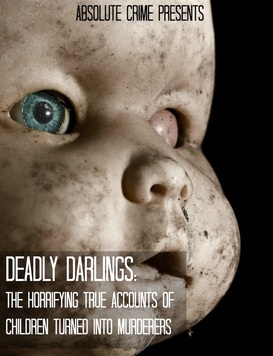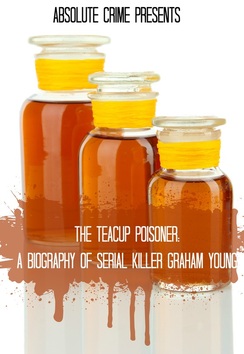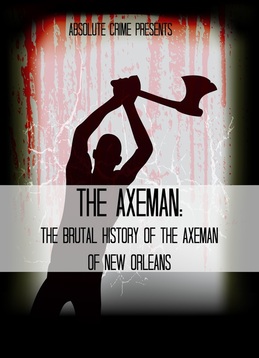GEORGE STINNEY JR., THE YOUNGEST PERSON EVER SENT TO THE ELECTRIC CHAIR
Child killers often provoke controversy, particularly when they expose racial and political fault lines in a society. One alleged American child killer, George Junius Stinney Jr., has become a symbol in the modern American debate over the death penalty. Stinney is also used as a symbol of the racism and injustice that was rampant in the United States in the mid-20th century. People are still working to clear Stinney’s name and get him a pardon, even though he was executed almost 70 years ago. Like many suspects in brutal murders, George Stinney has become something of a celebrity because of the publicity his case has been attracting since World War II.
The Youngest Person Electrocuted
At the age of 14, George Junius Stinney Jr. was the youngest person ever executed in the electric chair in the United States. He was also the youngest person executed in the 20th century in the United States and the youngest individual ever sentenced to death in America.
His case still provokes controversy, even though he died nearly 70 years ago. The reason for the controversy is obvious: some people who have examined his case believe that Stinney was probably innocent.
Stinney was either a monster and a would-be serial killer or the victim of racism and a politically motivated prosecution. The crime he was accused of was pretty heinous; he beat two young girls to death with a railroad spike. Yet many people believe Stinney was innocent because he was a young African-American man tried in the South at the height of segregation.
His case still provokes controversy, even though he died nearly 70 years ago. The reason for the controversy is obvious: some people who have examined his case believe that Stinney was probably innocent.
Stinney was either a monster and a would-be serial killer or the victim of racism and a politically motivated prosecution. The crime he was accused of was pretty heinous; he beat two young girls to death with a railroad spike. Yet many people believe Stinney was innocent because he was a young African-American man tried in the South at the height of segregation.
Savage Murder with a Railroad Spike
The crime began innocently on March 22, 1944 during the height of World War II. The battlefields were far away from the small town of Alcolu, S.C., but different kinds of evil lurked in the community. On that day, two young girls, eight-year-old Mary Emma Thames and Betty June Binnicker, went out for a bicycle ride.
During the ride, the girls, who were white, stopped to ask 14-year-old George Stinney, who was black, where they could find some wild flowers. They were never seen alive again. When the girls didn’t come home, search parties were organized, and Stinney, like most people in the community, joined in.
The next morning, the girls’ bodies were found in a ditch. They had been beaten to death with a heavy railroad spike. At the time, the media didn’t say whether the girls had been sexually assaulted or not. American news outlets didn’t start reporting details of such crimes until decades later.
During the ride, the girls, who were white, stopped to ask 14-year-old George Stinney, who was black, where they could find some wild flowers. They were never seen alive again. When the girls didn’t come home, search parties were organized, and Stinney, like most people in the community, joined in.
The next morning, the girls’ bodies were found in a ditch. They had been beaten to death with a heavy railroad spike. At the time, the media didn’t say whether the girls had been sexually assaulted or not. American news outlets didn’t start reporting details of such crimes until decades later.
Was he a Victim or a Monster?
George Stinney was arrested shortly after the bodies were discovered, and that’s when controversy began. Stinney was arrested because he had been seen in the area and helped in the search.
Stinney’s behavior during the investigation points to his guilt, or at least his involvement in the crime. He confessed to the murders and may have led a sheriff’s deputy to the murder weapon, a 14-inch long railroad spike. Spinney even gave a plausible motive for the crime; he said he wanted to have sex with Betty June, but she turned him down.
Stinney’s case does have some similarity to other child murderers. Robert Thompson, who killed a four-year-old boy in Liverpool, England in 1993, brought flowers to a memorial for his victim. Craig Price broke into a home and stabbed a woman to death when he was just 13 years old.
Stinney’s behavior during the investigation points to his guilt, or at least his involvement in the crime. He confessed to the murders and may have led a sheriff’s deputy to the murder weapon, a 14-inch long railroad spike. Spinney even gave a plausible motive for the crime; he said he wanted to have sex with Betty June, but she turned him down.
Stinney’s case does have some similarity to other child murderers. Robert Thompson, who killed a four-year-old boy in Liverpool, England in 1993, brought flowers to a memorial for his victim. Craig Price broke into a home and stabbed a woman to death when he was just 13 years old.
Doubts about Stinney’s Guilt and Racism
Not surprisingly, racism quickly reared its ugly head in the case. Shortly after Stinney’s arrest, a lynch mob formed and moved on the jail where he was held. Deputies saved Stinney from being lynched by moving him to Columbia, S.C.
Stinney went on trial just a month later in Manning, S.C. The trial itself was very questionable because the defense attorney, Charles Plowden, called no witnesses and made no effort to cross-examine the prosecution’s witnesses. Instead, Plowden simply argued that Stinney was too young to be executed, which was apparently not valid under South Carolina state law.
Plowden might have been motivated by politics; he wanted to run for office and he knew that a successful defense could cost him votes. The attorney might also been afraid of a lynch mob or the Ku Klux Klan. Some observers also note that Plowden had little experience in criminal law at the time of the Stinney trial.
Stinney was convicted after the jury deliberated for just five minutes. He was then sentenced to die in the electric chair.
Stinney went on trial just a month later in Manning, S.C. The trial itself was very questionable because the defense attorney, Charles Plowden, called no witnesses and made no effort to cross-examine the prosecution’s witnesses. Instead, Plowden simply argued that Stinney was too young to be executed, which was apparently not valid under South Carolina state law.
Plowden might have been motivated by politics; he wanted to run for office and he knew that a successful defense could cost him votes. The attorney might also been afraid of a lynch mob or the Ku Klux Klan. Some observers also note that Plowden had little experience in criminal law at the time of the Stinney trial.
Stinney was convicted after the jury deliberated for just five minutes. He was then sentenced to die in the electric chair.
Controversy Erupts
Despite its sensational nature, the Stinney case wasn’t well-reported because the media was focusing on World War II. It wasn’t until stories started appearing in the African American press in Mid-June shortly before the scheduled execution that the case generated controversy and attracted attention. A number of organizations, including the African American Episcopal (AME) Church and the NAACP, began petitioning South Carolina Governor Olin D. Johnston to pardon Stinney so he could avoid execution.
There is little indication that the opponents thought Stinney was innocent in 1944. Instead, the argument was that executing a child would make America look bad in the eyes of the world. Some critics compared the execution to Hitler and the Nazis.
Johnston ignored the pleas and the execution went forward on June 16, 1944. It took 2,400-volt jolts to kill the 5-foot-1, 95-pound Stinney. The case then largely disappeared into history, although it has occasionally been raised by death penalty opponents and civil rights activists.
There is little indication that the opponents thought Stinney was innocent in 1944. Instead, the argument was that executing a child would make America look bad in the eyes of the world. Some critics compared the execution to Hitler and the Nazis.
Johnston ignored the pleas and the execution went forward on June 16, 1944. It took 2,400-volt jolts to kill the 5-foot-1, 95-pound Stinney. The case then largely disappeared into history, although it has occasionally been raised by death penalty opponents and civil rights activists.
Was Stinney Guilty or the Victim of White Racism?
Some modern observers believe that George Stinney’s innocence can be proven by examining the record of the case. They note that Stinney might have been too small to pick up the murder weapon, which weighed 14 pounds. That argument seems doubtful; it is fairly easy for a 95-pound person to lift such an object.
An activist and former Alcou resident named George Frierson claims that a member of a prominent local white family committed the murders. He also claims a relative of that person served on a grand jury that investigated the case and recommended Stinney’s execution. Frierson did not present any evidence to verify his claims, nor did he name the prominent white suspect.
An activist and former Alcou resident named George Frierson claims that a member of a prominent local white family committed the murders. He also claims a relative of that person served on a grand jury that investigated the case and recommended Stinney’s execution. Frierson did not present any evidence to verify his claims, nor did he name the prominent white suspect.
Questionable Investigation
It is obvious that neither the investigation nor the trial met modern standards, although they were fairly typical of rural American justice in 1944. Stinney does appear to have been railroaded and not given a proper trial, yet the critics have not proved his innocence either.
After nearly 70 years, it is probably impossible to prove George Stinney’s guilt or innocence. The physical evidence is long gone, and so is much of the written evidence, which includes the transcript of the trial. Most of the witnesses are probably long dead.
This lack of evidence isn’t stopping Frierson and an attorney named Steve McKenzie, who are campaigning to get Stinney pardoned. One thing is certain: a pardon today will not do George Stinney Jr. any good.
After nearly 70 years, it is probably impossible to prove George Stinney’s guilt or innocence. The physical evidence is long gone, and so is much of the written evidence, which includes the transcript of the trial. Most of the witnesses are probably long dead.
This lack of evidence isn’t stopping Frierson and an attorney named Steve McKenzie, who are campaigning to get Stinney pardoned. One thing is certain: a pardon today will not do George Stinney Jr. any good.




